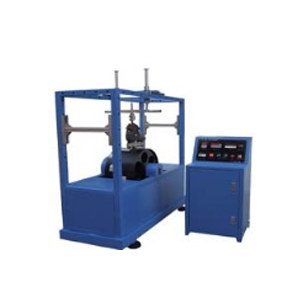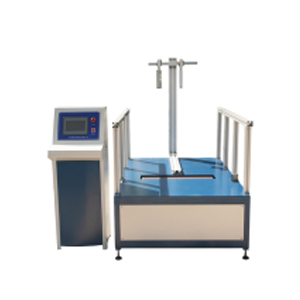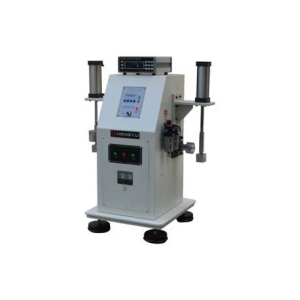LT-XB07 Luggage Pull Rod Reciprocating Testing Machine
technical parameter
1. Test travel: Adjustable from 20 to 100cm
2. Test location: 4-point sensing position
3. Stretching speed: adjustable from 0 to 30cm/sec
4. Compression speed: adjustable from 0 to 30cm/sec
5. Test frequency: 1~999999, automatic shutdown
6. Test power: pneumatic cylinder
7. Test piece height: up to 200cm
8. Auxiliary equipment: luggage fixing clip holder
9. Operating pressure: 5-8Kg/cm2
10. Machine size: 120 * 120 * 210cm
11. Machine weight: 150Kg
12. Power supply: 1 φ, 220V/50Hz
instructions
1. Preparation of test piece: The test piece should be parked for at least one hour in an environment with a temperature of 18OC to 25OC, and should not be compressed during the parking period.
2. Experimental method:
a. Fix the specimen on the fixed clamp of the rod reciprocating fatigue testing machine. If it is a finished rod, fix the lower half of the rod on the fixed clamp.
b. After pulling out the pull rod to the end, measure the length of the pull rod (i.e. the maximum pulling length of the pull rod) with a steel tape measure or steel ruler, and record it.
c. Fix the rod onto the rod clamp, and for samples with rod locks, align the rod lock with the rod lock switch position.
d. Set the pulling and closing stroke based on the maximum pulling length of the pull rod, and set the pulling and closing speed according to Table 1.
e. Choose the following number of times to test: 1000 times, 1500 times, 2000 times, 2500 times, 3000 times, or test according to the specified number of times. Every 1000 tests are conducted with a 5-minute interval.
f. At the end of the experiment, record the number of pulling and closing cycles, as well as the maximum force values for pulling and pressing.
g. Check whether the pull rod is deformed, whether the connection is loose, and whether the pull rod lock switch is normal.
Provide non national standard instrument manufacturing solutions, and some instruments can be resized and configured according to customer needs.




















